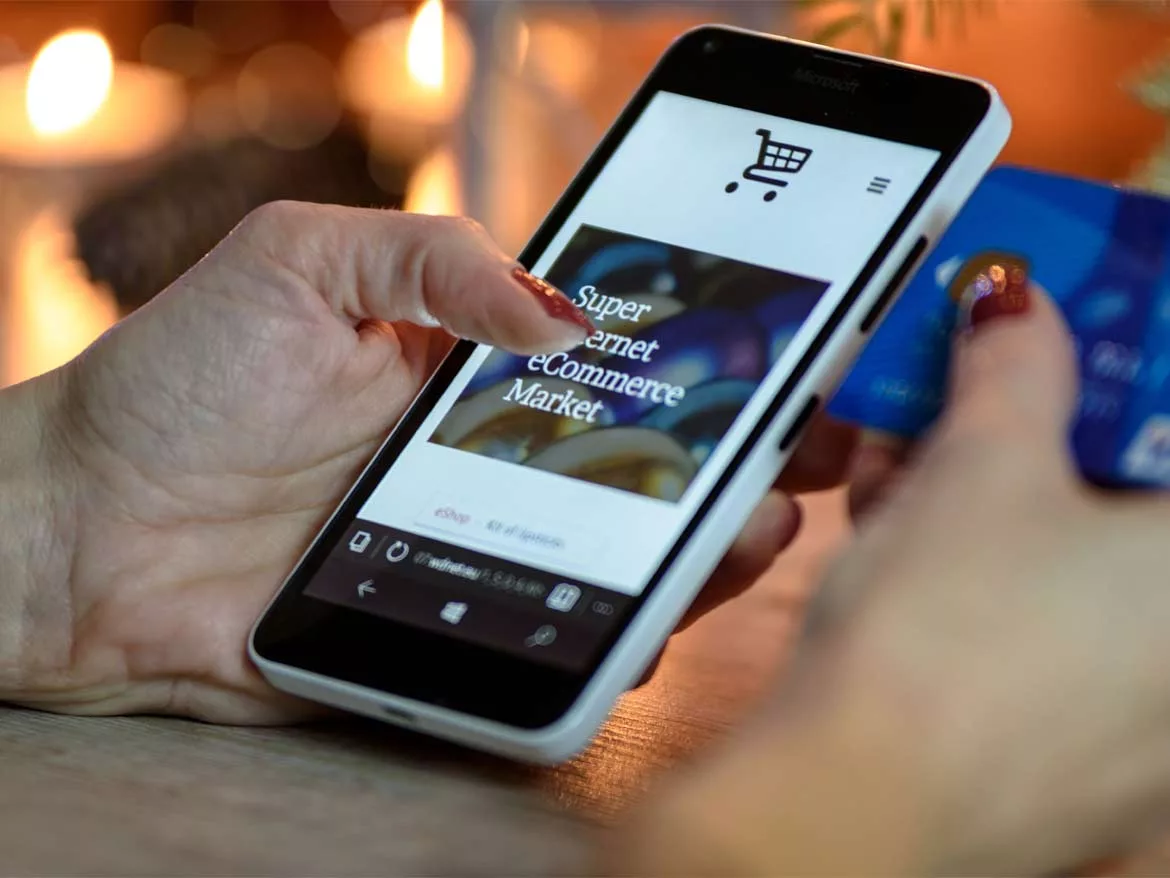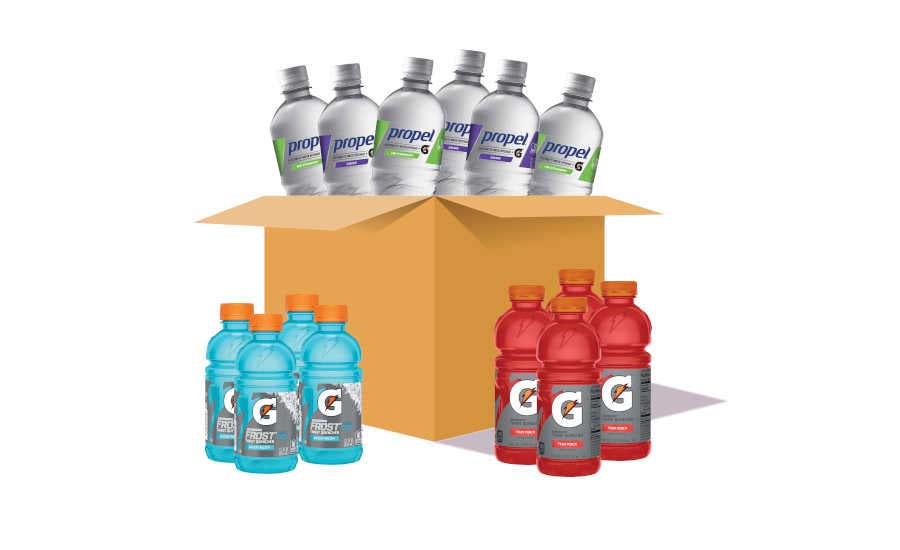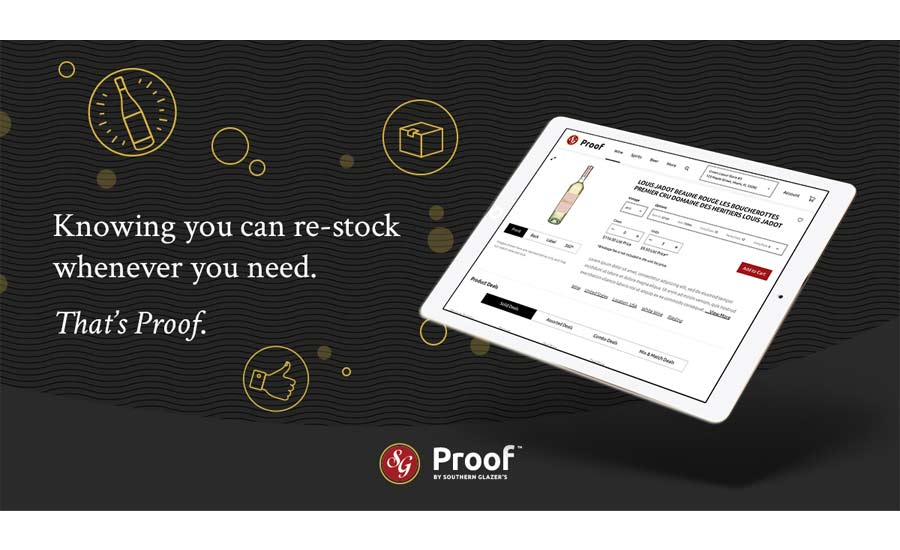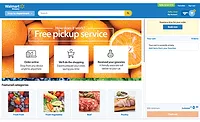Direct-to-consumer models expanding through eCommerce market
Wholesale community reaping benefits of digital mobility

As of March 2021, eCommerce sales were up 61% year-to-date, representing 22% of omnichannel market share sales, but 64% of omnichannel growth, IRI’s Joan Driggs says.
(Photo by PhotoMIX Company from Pexels/courtesy of Canva)
In the 1999 Disney Channel Original Movie “Smart House,” the Cooper family is enjoying all the perks of their sweepstakes win of a computerized house. However, as the Personal Applied Technology virtual assistant (PAT for short) is reprogramed by contestant winner Ben to emulate a 1950s-era TV show mother, the family reassess the benefits of the “Smart House” experiment.
Although pop culture and many of today’s consumers might quip about the growing influence that technology is having on day-to-day lives, data shows that when it comes to eCommerce, consumers can’t get enough of it.
“The pandemic was a booster rocket to the healthy trajectory eCommerce was already experiencing,” says Joan Driggs, vice president of Content and Thought Leadership for Chicago-based Information Resources Inc. (IRI). “Out of need, people began ordering more everyday household and food items ― even fresh and frozen foods ― online. Even into March 2021, lapping the pandemic, eCommerce sales are up 61% from a year ago, representing 22% of omnichannel sales, but 64% of omnichannel growth.
“Additionally, product discovery and search online also increased as we limited our shopping time in-store,” she continues. “If possible, the pandemic has made our digital devices even more valued. It’s how we get our entertainment, our information, it’s how we connect with friends/co-workers, etc. Because it is the one constant in our day, we’re increasingly comfortable with and reliant on digital marketing and commerce.”
In terms of demographics, Driggs highlights that the acceptance of eCommerce has seen an uptick in all walks of life.
“In one example, we’ll call it Retailer A, 8.3% of shoppers ages 36-45 began shopping online in the past year, up 4.1 percentage points, followed closely by 7.6% of 19-35-year-olds, up 4 [percentage points] from a year ago (February 2020-2021),” she notes. “But that’s not to say older consumers are not shopping online ― 5.3% of 46-65s are shopping online, up 3.2 [percentage points], and 3.6% of shoppers 66-plus, up 2.7 [percentage points]. And this behavior will stick, with nearly two-thirds of consumers reporting their eCommerce activity will continue post-pandemic.”

Image courtesy of PepsiCo
The direct approach
As consumers become more comfortable with eCommerce shopping, this also has led to a rise in beverage-makers directly connecting to them through direct-to-consumer (DTC) operations.
“Direct-to-consumer allows CPGs to forge their own relationships with consumers, pushing out offers that will be considered personal and valuable versus just more noise,” Driggs says. “They also have the ability to create a community of consumers with similar interests ― even multiple communities that can act as a test and learn for new initiatives.
“Consider a brand wanting to launch a new product. It could start the launch as an exclusive to those already in its DTC community ― it’s a win for the member and getting that direct feedback is a win for the brand,” she continues. “The information gathered directly from shoppers can help with other developments, including new product innovation and marketing strategies.”
In the beverage market, more DTC platforms emerged throughout the pandemic. For example, in May 2020, PepsiCo Inc., Purchase, N.Y., launched PantryShop.com and Snacks.com, two direct-to-consumer websites where shoppers can order an assortment of PepsiCo's food and beverage brands.
“Over the last few years, PepsiCo has been working to be a faster, stronger, better company, one that is laser focused on meeting consumer needs and winning in the marketplace. Investing in eCommerce and digital capabilities and talent has been — and will continue to be — a big part of that effort,” said Gibu Thomas, senior vice president and head of eCommerce for PepsiCo, in a statement at the time of the launch. “In these uncertain times, as more and more consumers are using eCommerce channels to purchase food and beverage products, PantryShop.com and Snacks.com offer shoppers another alternative for easy and fast access to products they love.”
Earlier this year, Uncle Matt’s Organic, Lermont, Fla., made its best-selling organic juices and functional beverages accessible to even more consumers through its new eCommerce site. The DTC platform offers an array of mixed product bundles and exclusive online offers, like new products, that will create a convenient and exploratory way to experience the Uncle Matt's Organic brand, it says.
The company reports that shipping currently is available to most of the East Coast, with plans to expand nationwide. The online store brings organic orange juice, lemonade and functional beverage bundles directly to consumers' doors in one to two days through FedEx.
“Orange juice has seen a steady increase in sales since March, as consumers turn to what they associate with immune health: a good measure of OJ," said Matt McLean, Uncle Matt's Organic founder and CEO, in a statement at the time of launch. “Consumers have made their choice for organic orange juice clear, so we wanted to widen our product availability with the launch of our new direct-to-consumer platform. Also, consumer shopping habits have changed due to the pandemic, so we believe this is a relevant time to offer our consumers another destination to purchase and engage with Uncle Matt's Organic.”
IRI’s Driggs notes that DTC can be a win for small companies that are challenged in capturing visibility in brick-and-mortar stores. However, DTC is not without its obstacles.
“It’s challenging to set up DTC, because it includes a different form of fulfilment as well as direct marketing, which is new for many brands,” Driggs explains. “Digital marketing alone is very different from traditional print and broadcast, but then layer in the operational element and it’s an entirely new business. An additional challenge is that one brand cannot satisfy all needs, so consumers must really like the brand and the relationship to keep it up.”
Despite these challenges, Driggs prognosticates that DTC will continue to carve its niche within the growing eCommerce market.
“Consumers and shoppers really appreciate the personal touch, and DTCs can feel like a community ― even an exclusive community ― that shoppers want to belong to,” she says. “Retailers can’t offer brands that level of access to shoppers.”

Image courtesy of Southern Glazer’s Wine & Spirits
Wholesale mobility
Although DTC is offering new opportunities for large and small companies in the beverage market, wholesalers also are seeing the benefits of implementing digital mobility with its partners.
Southern Glazer’s Wine & Spirits, Dallas and Miami, offers its retail and on-premise partners access to its Proof digital ecosystem, which includes Proof Sales, Service and Commerce platforms.
“We went out of our way to put the customer front and center in our design and all the value that we’re trying to bring,” says Carlos Vigil, vice president of digital transformation at Southern Glazer’s.
Vigil explains that the platform elevates the role of the Southern Glazer’s sales teams with the customers so they can see what the customer is accessing digital in to customize the experience. “[We’re] making sure that we’re talking to the customer in the highest and best way possible about the opportunities and about how we can help them make better decisions about product, price and to keep up with the changing demands,” he says.
Vigil notes that Proof was performing well prior to the pandemic, but when face-to-face interactions were greatly reduced, the digital ecosystem saw utilization accelerate.
“[O]ur customers have the ability to browse our catalog to connect with their sales people virtually, to purchase virtually on their own time and to do it in a much safer way during COVID,” he says. “I think it was an unexpected benefit that none of us saw … the pandemic coming but it ended being a very useful thing for our business resilience for our customers, for our sales teams and for our supplier partners. I think we had a lot of traction coming into the pandemic as well.
“We were seeing month-over-month increases in engagement and the customer purchasing through Proof, but the pandemic certainly accelerated that during that period of time, and we’re continuing to see that acceleration as we emerge from the pandemic and have sunnier skies heading our way pretty soon, but we’re continuing to see that trend,” he continues.
Although Proof is proving to be a successful program for Southern Glazer’s ― it recently reached 1 million distribution points ― Vigil notes that the company remains proactive about streamlining processes as the program evolves.
“We have a very robust roadmap working with our technology partners and working with our own team understanding our customers, our sales, our external customers and our B2B customers out there,” he says.
For instance, the Proof Commerce division is working to make its platform operate in the same manner as consumer-facing eCommerce systems operate.
“The No. 1 thing is we want to personalize more, we to make sure that it’s easier for customers to browse, to buy and to pay and we take all that service merchant out of it,” Vigil says.
For Proof Sale, which interfaces with its sales team members, it’s looking to arm its employees with information and visuals they need to have success.
“For our sales teams, we’ve been doing a lot of work to make sure we make it clear to them and we provide it to them at their fingertips what their goals are, how they’re progressing to those goals, how they can plan for those goals and execute on those goals,” he says. “[Proof aims] to give them some rich visualizations of the information about their customers and their route and our supplier partners so they can be better informed themselves about how they can understand their customers’ businesses, and make sure they make great choices for their customers, but also show the customer through the iPad. There’s a lot going on with how we present insights to the customers, and all the account management that our teams previously had to go get in different places, we’re trying to put in one place in Proof.”
Developed for business buyers
As eCommerce becomes more mainstream, technology providers recognize how grand the need state is for the wholesale community. Taylor Katzman, CEO of Chicago-based Provi, explains that because eCommerce is commonplace with consumers, it’s not a surprise that business buyers are searching for the same convenience and efficiency.
“B2B eCommerce marketplaces like Provi place the retailer’s needs at the forefront of the ordering process, helping business owners save hours of valuable time each month,” he says. “The innovative technology provides access to every distributor’s catalog while simultaneously allowing orders to be communicated to all representatives, in one place. It not only saves time but it lets buyers place orders on their own terms, from any location to whomever they need.”
Katzman adds that digital platforms for business-to-business operations not only expand the traditional selling hours but also aids in customer service for in-person activities.
“A majority of wholesalers are also facing a common problem: a shrinking distributor salesforce combined with an increase in sales reps' territories and portfolio size,” he says. “This forces sales reps to prioritize certain accounts over others, which leads to a loss in sales due to lack of capacity to service. eCommerce acts as air support to sales reps, which helps them increase sales organically by providing the same level of service to each customer they manage.”
Through Provi, beverage wholesale operations can realize a host of solutions.
“In conjunction with increased efficiencies for sales teams, our partners also get instant access to the sales-driving power of an online marketplace,” Katzman explains. “Unlike standard eCommerce stores, a marketplace enables wholesalers to sell products to existing customers while attracting new business and increasing exposure. Partners are also provided with a Provi Storefront.
“Storefronts are a customizable eCommerce experience uniquely tailored to the partner giving them the ability to promote specific products, control the way their portfolio is presented and direct customers via their website or other marketing initiatives, driving traffic and increasing sales,” he continues. “Best of all, partners gain access to advanced sales and customer data and analytics to measure the ROI of their efforts and gain valuable insights.”
As more beverage-makers and wholesalers embrace digital mobility, it seems likely that eCommerce will play an increasing role in beverage operations.
Looking for a reprint of this article?
From high-res PDFs to custom plaques, order your copy today!







